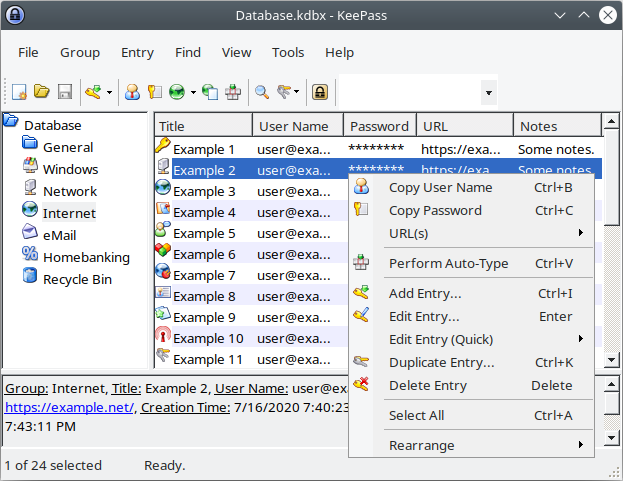

But after some reading and experimentation, it seems that it really does encrypt everything with AES.ĥ. This step of the process was the reason I was wary of this setup at first - I didn't want all my sensitive data exposed over some silly, unprotected interface. If not, manual install instructions are at its home page. If you are on Windows and use Chocolatey, you can install it with: choco install keepass-keepasshttp -y

If everything seems okay, I suggest you exit KeePass again and delete the PW Exporter plugin, since you won't be needing it again.Īlso uninstall the Password Exporter add-on from Firefox. Importing to the root worked fine.Īfter clicking Start, you should get a pop-up saying how many entries were imported. When I selected a group different from the topmost (root) one, the importer plugin crashed. Then go to File | Import, select Firefox XML (at the bottom of the list), browse to your exported XML file and confirm. You have to close KeePass and launch it again in order to load the plugin. That's why, in the step above, you've exported your passwords into an XML.

I've installed the extension according to instructions (copy-paste into the Plugins folder, which required admin privileges), but haven't been able to get it to import from Firefox directly - it either ended with an error, or crashed KeePass completely. Install Firefox to KeePass Password Importer. You should get a file called something like password-export-.xml. Click it, then simply click Export Passwords (no obfuscation needed) to the default XML format. Simply install it (doesn't require a browser restart), go to Firefox's Settings, click Security, where you should now see a button saying Import/Export Passwords. It probably can be fixed - the PassIFox's page says it should work - but I've realized that since I'm now using KeePass as a master database, there is no reason to upload them to Firefox's servers, as well. After connecting FFox to KeePass, I've encountered some weird behaviour. I'd been using Firefox's Sync feature for Passwords for a long time. Consider turning off Firefox's Password Sync feature. Note that while I am using this with Firefox (on Windows), all of the add-ons should also be available for Chrome. If you'd rather explore on your own, see the bottom of this post for a shortened version of the process, with links. I ended up liking this setup, so here's how you can replicate it. Thanks, Jeremie, for pointing it out to me.Īfter a long time of using both KeePass and (synced) Firefox password manager to store my passwords, I wanted to find out whether I can use KeePass for both. I'm striking out the links to it in this article.

2019: The links to PassIFox are dead now.


 0 kommentar(er)
0 kommentar(er)
